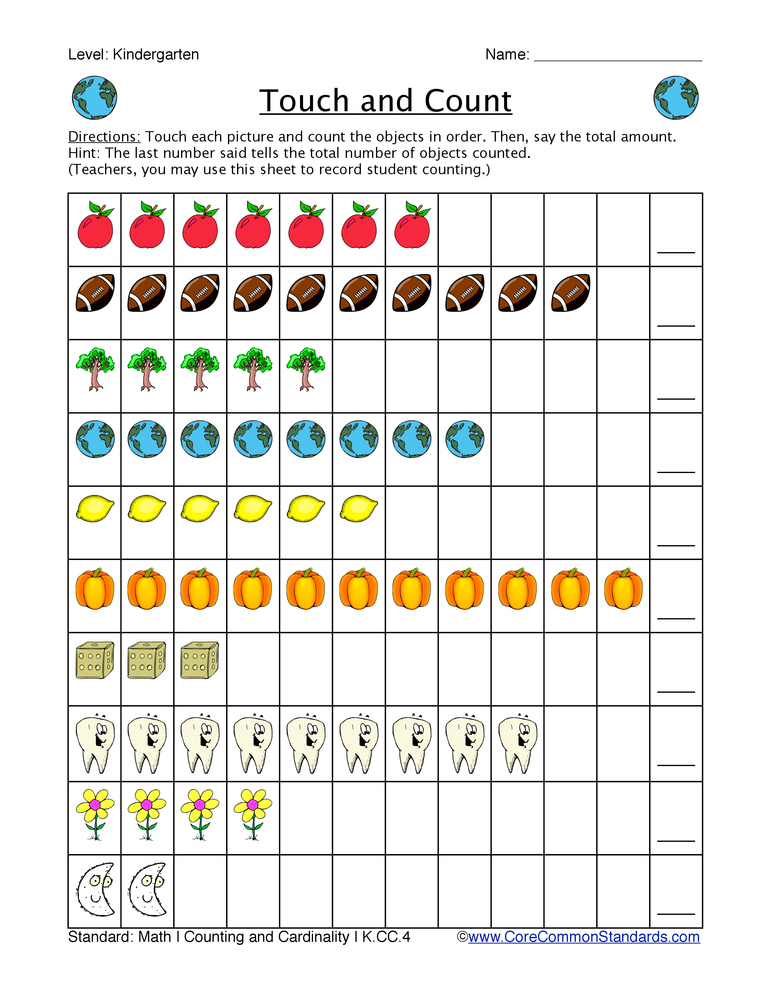

The teacher may read the book several times and then provide opportunities for children to do the same, to increase familiarity with the words within. For example, a child who reads “It is a mouse” for “It is a rat” might be coached to look at the first letter and then subsequent letters in the word and try again.
CCSS KINDERGARTEN READING WORKSHEETS HOW TO
The teacher demonstrates how to look at each letter, consider the sound associated with that letter, and blend those sounds together to make words she or he prompts children to use the letters to identify words ( Scanlon, Anderson, & Sweeney, 2010). Children and teachers discuss the photographs or illustrations in the book, which are often of high interest, building observation skills ( Roberts et al., 2013). The teacher points to words as he or she reads them to show children that we read from left to right and word by word ( Zucker, Ward, & Justice, 2009). Not surprisingly, the most straightforward way to help children learn to read emergent-reader texts is to read such books with children. The next page shows a photo of a joey in his or her mother kangaroo’s pouch and reads, “It can sit in Mom.” Notably, this and the other emergent-reader text I described are much less challenging than what we have historically expected children to read by the end of first grade-books such as Little Bear by Else Holmelund Minarik, for example-contradicting the report’s claim that “Kindergarten has become the New First Grade.” The first page shows a photo of an owl in a tree and reads, “It can sit in a tree.” The word tree has a drawing of a tree above it (a rebus some books have so much support in the main picture or photo that it might be seen as acting as a rebus, leading more texts to be counted as emergent-reader texts by the CCSS definition). Along with the title, the cover has a photo of a hen sitting on eggs. Yum!”Ī more challenging emergent-reader text is Sit by Tom Beedy. The third and final page has a photo of buns with jam on them and reads, “Jam on buns. Page two has a photo of jam and the word jam. (Note that in emergent book-reading assessments, teachers are typically expected to read the title to children.) Page one has a photo of buns and the word buns. The cover has a photograph of two buns and a bowl of jam along with the title. An example of an emergent-reader text from TextProject is Buns and Jam. Appendix A of the CCSS defines in its glossary emergent-reader texts as “Texts consisting of short sentences comprised of learned sight words and CVC words may also include rebuses to represent words that cannot yet be decoded or recognized see also rebus” (p. What it actually says is that children are expected to read emergent-reader texts, which is rather different from “reading” as many people understand it. Many people have interpreted this standard to mean that children are expected to read by the end of kindergarten.

The first example standard the authors list isįluency .K.4: Read emergent-reader texts with purpose and understanding. I believe each standard can be addressed through instruction that involves neither long hours of drill nor worksheets and incorporates other vital areas of learning as well. The authors go on to list six example standards in the CCSS literacy standards for kindergarten. In a box called “Kindergarten has become the New First Grade: Examples from Common Core,” the authors write, “To achieve them usually calls for long hours of drill and worksheets-and reduces other vital areas of learning such as math, science, social studies, art, music and creative play” (p. In a two-part blog post, I will focus on one particularly problematic claim in the report. In a recent report, three scholars critique the Common Core State Standards for kindergarten.


 0 kommentar(er)
0 kommentar(er)
